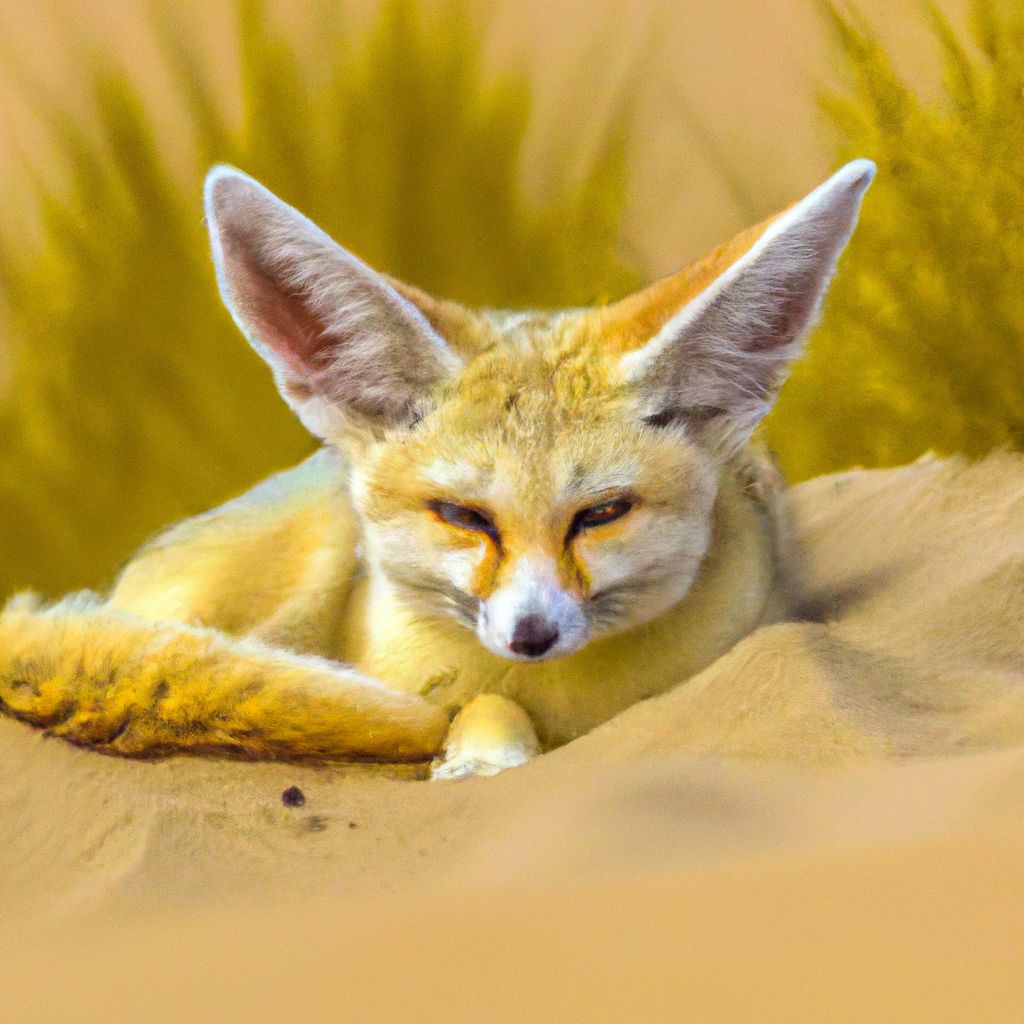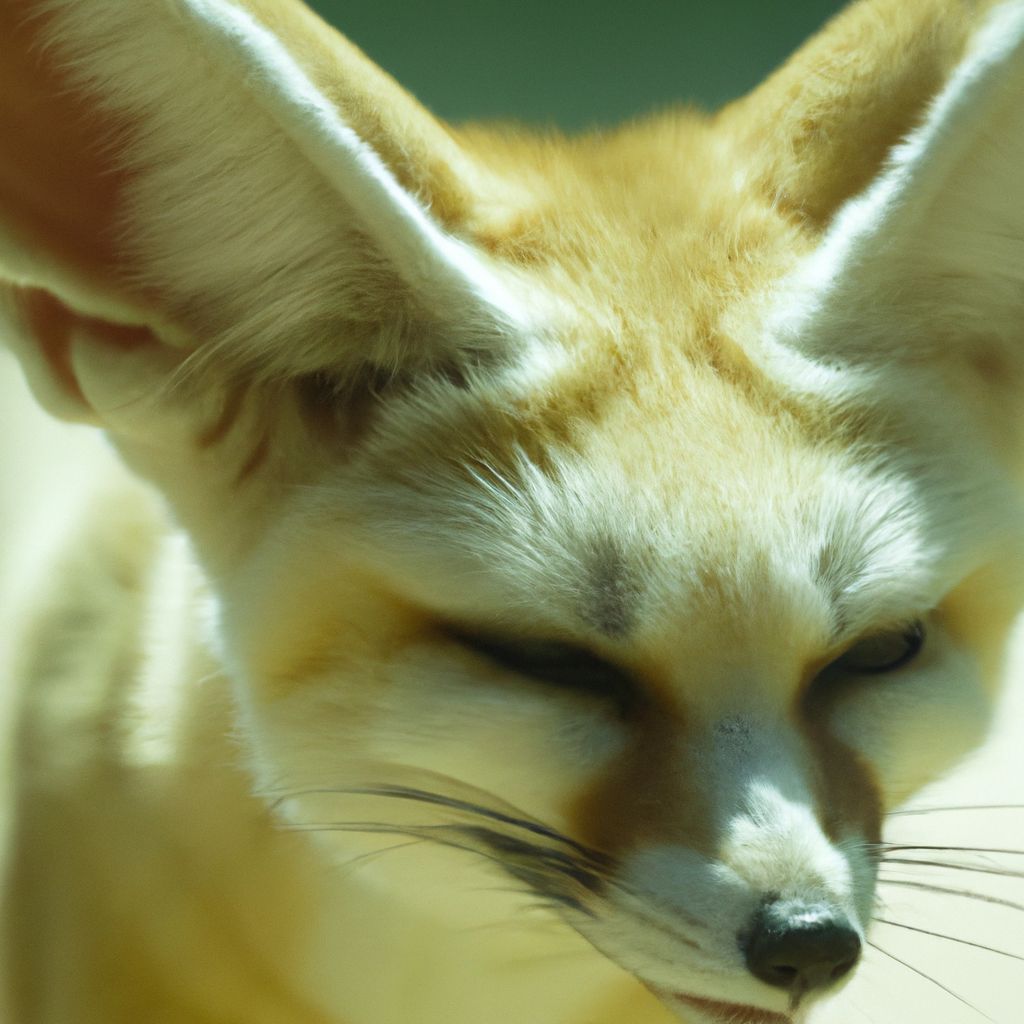The Fennec Fox (Vulpes zerda) is a fascinating creature known for its unique characteristics and adaptations. This small desert-dwelling fox has captured the attention of many with its adorable appearance and intriguing behaviors. Understanding the binomial name and taxonomy of the Fennec Fox provides further insight into its classification and evolutionary history.
Fennec Foxes are native to the deserts of North Africa and are well-adapted to their arid environment. With their petite size and distinct physical features, they are instantly recognizable. Despite their small stature, Fennec Foxes possess remarkable abilities to survive in extreme desert conditions.
In this article, we will explore various aspects of the Fennec Fox’s life, including its physical characteristics, distribution, habitat, behavior, diet, reproductive cycle, and conservation status. Understanding these aspects will give us a comprehensive understanding of this remarkable animal and its place within the animal kingdom.
So, let’s dive into the world of the Fennec Fox and uncover the intriguing details that make it such a captivating creature.
Contents
- 1 Physical Characteristics of Fennec Fox
- 2 Distribution and Habitat of Fennec Fox
- 3 Behavior and Adaptations of Fennec Fox
- 4 Diet and Feeding Habits of Fennec Fox
- 5 Reproduction and Life Cycle of Fennec Fox
- 6 Threats and Conservation Status of Fennec Fox
- 7 Binomial Name and Taxonomy of Fennec Fox
- 8 Frequently Asked Questions
Physical Characteristics of Fennec Fox
The physical characteristics of a fennec fox are unique and adapted to its desert habitat. Fennec foxes are the smallest species of fox, with an average head-to-body length of 14 to 16 inches (35 to 40 cm). Adding their tails, which can reach up to 8 inches (20 cm), they have a total length. Their distinctive large ears, measuring up to 6 inches (15 cm), help dissipate heat and provide excellent hearing to detect prey underground. Their sandy fur helps them blend into the desert surroundings.
In order to survive in the desert, fennec foxes have developed several physical adaptations. They have thick fur on the soles of their feet, which provides insulation and aids in walking on loose surfaces. Furthermore, their ears are protected by fur, shielding them from the sun and keeping out sand.
Due to their nocturnal nature, fennec foxes are primarily active at night. This is when their large ears play a crucial role in locating prey and avoiding predators in low-light conditions. Like other foxes, they use vocalizations and body language for communication, making barking, squeaking, and chirping sounds.
Distribution and Habitat of Fennec Fox

Photo Credits: Foxauthority.Com by Alexander Jackson
The Fennec Fox is primarily distributed in the deserts of North Africa, including the Sahara Desert, the Sinai Peninsula, and the Arabian Desert. They have successfully adapted to thrive in these arid and harsh environments.
With their large ears, Fennec Foxes are able to dissipate heat and also detect prey or predators. Their thick fur provides insulation, keeping them warm during cold nights in the desert.
These unique foxes create intricate underground dens as their habitat, which not only offers them security but also protection from extreme temperatures and sandstorms. As opportunistic omnivores, they consume a diet that includes insects, small mammals, fruits, and vegetation.
Unfortunately, the Fennec Fox population has faced a decline in certain areas due to habitat loss and human interference. In order to ensure their survival, conservation efforts are being implemented to protect their habitats. It is crucial to raise awareness and emphasize the significance of preserving these desert ecosystems for the Fennec Fox and other species that depend on them.
Behavior and Adaptations of Fennec Fox

Photo Credits: Foxauthority.Com by Jeremy Taylor
The Fennec Fox is a remarkable creature known for its ability to survive in harsh desert environments. One behavior that stands out is its burrowing. These foxes expertly dig intricate tunnels in the sand, creating a network of interconnected burrows for shelter and protection.
What sets the Fennec Fox apart are its adaptations that enable it to thrive in the desert. Its large ears serve multiple functions. They help dissipate heat, regulate body temperature, and enhance hearing. The thick fur of the Fennec Fox provides insulation during chilly nights and reflects sunlight during the day, allowing it to withstand the extreme desert temperatures.
To avoid the scorching daytime heat, Fennec Foxes are primarily active at night. They possess excellent night vision, which they use to their advantage in hunting prey like rodents, insects, and small birds.
Diet and Feeding Habits of Fennec Fox

Photo Credits: Foxauthority.Com by Justin Flores
The Fennec Fox has adapted its diet and feeding habits to survive in the desert. It is omnivorous, consuming both plants and animals. Its primary source of food consists of small rodents like mice and birds. It also partakes in insects, reptiles, and eggs. By taking advantage of the resources available in its environment, the Fennec Fox hunts and scavenges opportunistically.
Apart from animal prey, the Fennec Fox also includes various plant materials such as fruits, berries, roots, and leaves in its diet. This diverse intake helps supplement its primarily meat-based meals by providing essential nutrients that may be lacking.
To thrive in the desert, the Fennec Fox has adapted to obtain water from its food. As a result, it can endure prolonged periods without drinking, as it acquires sufficient moisture from its diet. This adaptation is crucial for its survival in arid regions.
Being a crepuscular animal, the Fennec Fox is most active during dawn and dusk. It utilizes its large ears to locate prey underground, relying on its exceptional hearing.
Here’s a fun fact: The Fennec Fox possesses specialized fur on its feet, allowing it to walk on the scorching sand in its desert habitat without getting burned.
Reproduction and Life Cycle of Fennec Fox

Photo Credits: Foxauthority.Com by Dennis Taylor
The reproduction and life cycle of the Fennec Fox is truly fascinating. Fennec Foxes experience sexual maturity at around 9 to 10 months old, showcasing their unique biological progression. These incredible creatures have a monogamous mating system, forming a deep and enduring bond that lasts a lifetime. During the breeding season, which typically occurs from January to February, the male Fennec Fox marks his territory to attract a female companion.
Following successful mating, the female Fennec Fox undergoes a gestation period lasting approximately 50 to 52 days. It is during this time that she nurtures and carries her litter of usually 2 to 5 kits. The newborn kits enter the world blind, their eyes yet to perceive the wonders around them. Despite their initial vulnerability, these precocious kits possess a weight of around 50 grams, indicating their astonishing strength at such a young age.
The mother Fennec Fox dutifully provides her newborns with milk until they are weaned, generally occurring when they reach 70 to 90 days old. This crucial nourishment aids in their growth and development, setting them on a path towards maturity. As the kits continue to grow, they acquire important skills from their parents, ultimately transforming into juveniles at approximately 4 to 5 months old. It is not uncommon for these juveniles to remain with their parents until they too attain sexual maturity, further underscoring the strong familial bonds that exist among Fennec Foxes.
Allow me to share a true story that beautifully illustrates the life cycle of the Fennec Fox. In the arid deserts of North Africa, a devoted pair of Fennec Foxes painstakingly constructed an underground den, meticulously preparing a safe environment to nurture their young. With unwavering dedication, the mother Fennec Fox diligently cared for her litter of three kits, providing them with the warmth and nourishment they required for survival. Meanwhile, the father Fennec Fox embarked on arduous hunting expeditions, returning triumphantly with insects and small rodents to satiate the family’s hunger.
As time progressed, the kits gradually grew stronger and more agile, mastering vital skills that would enable them to thrive in the unforgiving desert habitat. Under the watchful gaze of their attentive parents, the young Fennec Foxes embraced their growing independence and embarked on daring expeditions outside the den. This joyous sight served as a testament to the remarkable resilience and adaptability displayed by Fennec Foxes in their unwavering quest for survival amidst the challenging desert terrain.
The stunning reproduction and life cycle of the Fennec Fox offer a glimpse into the incredible world of these enigmatic creatures, showcasing their tenacity and determination to thrive in their demanding natural habitat.
Threats and Conservation Status of Fennec Fox
Threats and Conservation Status of Fennec Fox
The Fennec Fox faces habitat loss due to agriculture, urbanization, and development. This negatively impacts their population and survival.
Climate change disrupts the Fennec Fox’s habitat and ability to find food and water.
Predators such as jackals and eagles prey upon Fennec Foxes, which can cause their population to decline.
The illegal pet trade puts additional pressure on Fennec Fox populations in the wild.
Conservation efforts such as establishing protected areas, enforcing conservation laws, and raising public awareness are crucial for their survival.
Immediate action is necessary to address these threats and ensure the long-term conservation of the Fennec Fox. Protecting their habitats, combating climate change, and preventing illegal trade can safeguard their future and maintain biodiversity.
Binomial Name and Taxonomy of Fennec Fox
The Fennec Fox, also known as Vulpes zerda, is classified under the binomial name and taxonomy system. It belongs to the Canidae family, along with other foxes, wolves, and domestic dogs. Taxonomically, the Fennec Fox can be categorized as follows:
The binomial name and taxonomy are essential tools for identifying and classifying different species. They enable effective communication and understanding among researchers studying various animals. In 1758, the Swedish zoologist Carl Linnaeus described the binomial name and taxonomy of the Fennec Fox. Linnaeus is widely recognized as the pioneer of modern taxonomy due to his significant contributions in the field. The binomial name, Vulpes zerda, indicates the Fennec Fox’s classification within the genus Vulpes and the specific epithet zerda. Throughout the years, there have been no notable changes or updates to the taxonomy of the Fennec Fox. Scientists continuously study and expand their knowledge about this captivating species, but its binomial name and place in the animal kingdom remain unchanged.
Frequently Asked Questions
What is the scientific name of the fennec fox?
The scientific name of the fennec fox is Vulpes zerda.
Where can fennec foxes be found?
Fennec foxes are found in the deserts of North Africa, specifically in sandy and semi-arid desert regions, including the Sahara, western Sahara, and the Sinai and Arabian peninsulas.
What are the distinctive features of the fennec fox?
The fennec fox has several distinctive features, including its over-sized ears, which help regulate its body temperature and listen for underground prey. It also has fur that is whitish to sand-colored, black-tipped tail, and large dark eyes.
How do fennec foxes survive in the desert?
Fennec foxes have adapted to survive in the desert environment by having features such as furry feet that allow them to walk on hot sand and kidneys that minimize water loss. They can also get all their water from the vegetation they consume.
What is the biggest threat to fennec foxes?
The biggest threats to fennec foxes include habitat loss and hunting. They are also captured for the exotic pet trade.
What is the average litter size of fennec foxes?
The average litter size of fennec foxes is 2-5 offspring, which are known as kits.


